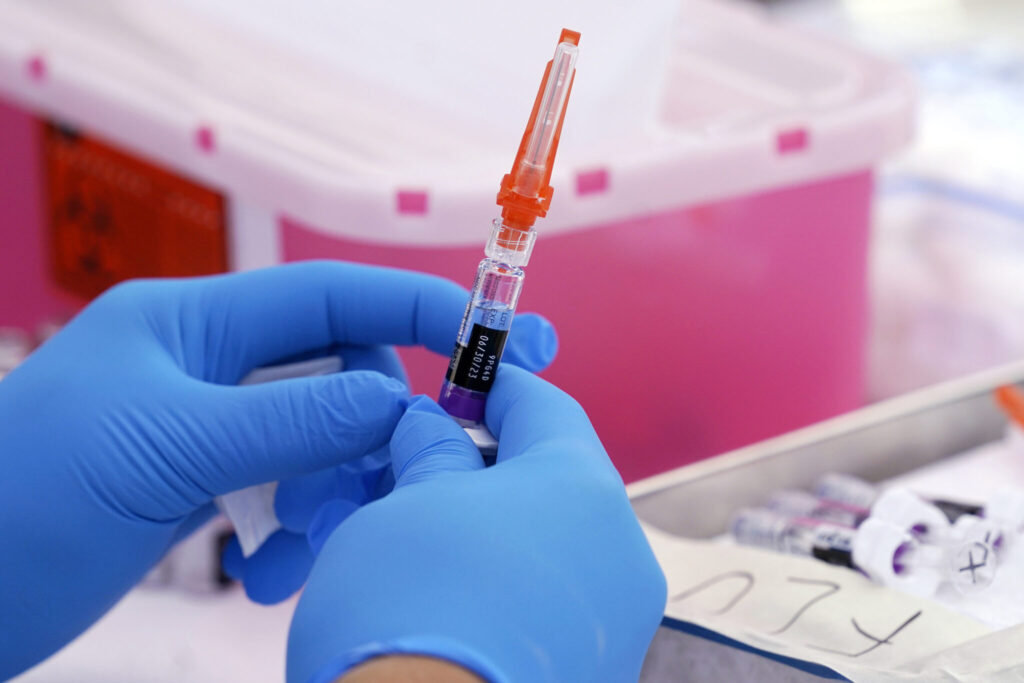COVID-19 hasn’t gone away, and data from the Centers for Disease Control and Prevention suggests it’s on the upswing around the country. “We’ve seen these summer increases every summer that COVID-19 has been with us,” said Dr. Amesh Adalja, a Johns Hopkins University infectious disease physician. “What’s different about these cases this summer vs. prior summers is that they don’t translate into hospitals in crisis.”
Quick Read
- COVID-19 cases rise in the U.S.: COVID-19 is on the upswing across the country, according to data from the Centers for Disease Control and Prevention (CDC).
- Summer trends continue: Dr. Amesh Adalja from Johns Hopkins University notes that summer increases in COVID-19 cases have occurred each year since the pandemic began, but this year, these increases have not led to hospitals being overwhelmed.
- Reasons for the surge: Factors contributing to the rise include increased travel, people spending more time indoors to avoid the heat, and the virus’s ongoing evolution, which may help it evade immunity.
- Testing challenges: The true number of COVID-19 cases is unclear due to sporadic testing and unreported infections, but nearly 15% of lab tests are coming back positive, indicating a surge.
- Hospitalizations and doctor visits remain manageable: While COVID-19-related hospitalizations are increasing, they are still below winter levels and far from the peaks seen earlier in the pandemic. Doctor visits for flu-like symptoms remain low.
- Wastewater data shows high levels: The CDC’s monitoring of wastewater indicates the highest levels of the virus since January, with activity particularly high in the West and South.
- Experts advise caution: Brown University pandemic researcher Jennifer Nuzzo warns that while the data shows significant virus presence, it doesn’t provide a clear picture of the exact number of infections.
- Stay vigilant: Adalja recommends staying up to date on vaccinations and wearing masks in crowded indoor spaces, especially for those at higher risk of severe illness. The CDC advises staying isolated until symptoms improve and you’ve been fever-free for 24 hours.
The Associated Press has the story:
COVID-19 is on the upswing in the US, Doctors say
Newslooks- (AP)
COVID-19 hasn’t gone away, and data from the Centers for Disease Control and Prevention suggests it’s on the upswing around the country. “We’ve seen these summer increases every summer that COVID-19 has been with us,” said Dr. Amesh Adalja, a Johns Hopkins University infectious disease physician. “What’s different about these cases this summer vs. prior summers is that they don’t translate into hospitals in crisis.”
Adalja said factors in the seasonal increase could be increased travel, people staying indoors to avoid summer heat and the virus’ continued evolution — which could help it get around people’s immunity.
Testing for COVID-19 is sporadic and the true number of cases isn’t clear because many infections aren’t reported. But one way to spot trends is to see what percentage of lab tests come back positive. By that metric, COVID-19 is surging, with nearly 15% of tests coming back positive vs. less than 1% for flu.
Nevertheless, doctors’ offices aren’t seeing an outsized share of people with symptoms of respiratory illness. The proportion of doctor visits for flu-like symptoms remains low.
And COVID-19-related hospitalizations are rising, but they remain below the levels seen in winter — and far below the peaks seen earlier in the pandemic.
The CDC also tries to monitor the spread of the coronavirus by looking for it in sewage and other wastewater at participating sites across the country.
The most recent wastewater data — from the beginning of August — shows the highest levels since January. Detections were highest in the West and South, and lowest in the Northeast. The agency labels national wastewater viral activity level as “very high.”
Experts say to treat the data with caution because it has limitations.
“You just know it means there’s a lot of virus out there,” said Jennifer Nuzzo, a Brown University pandemic researcher. “But you don’t know how many people, how many infections that translates to.”
Nevertheless, the wastewater data shows “there’s a whole lot of COVID out there,” she added.
Adalja suggested staying up to date on your vaccinations and that people at higher risk of a serious illness consider wearing masks in crowded, indoor congregated areas.
If you do get sick, note that the CDC recommends staying away from other people until your symptoms are improving and you’ve been fever-free for 24 hours.
COVID-19 is now “basically part of the human condition,” Adalja said. “It’s unavoidable when you interact with humans.”







